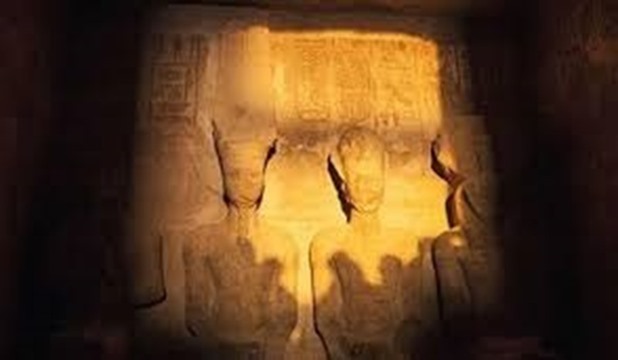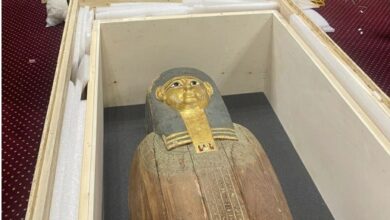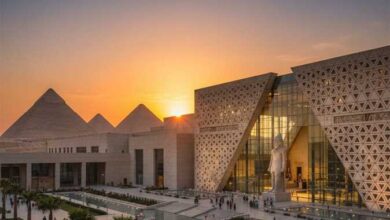
Sun aligned Tuesday morning on the statute of Ramses II in Aswan’s Abu Simbel Temple on a rare phenomenon that happens twice a year; on February 22 and October 22.
In statements to MENA, Director General of the General Department of Egyptian, Greek and Roman Antiquities in Aswan governorate Fahmy el Amin said the phenomenon started at 6:53 a.m. and lasted for nearly 20 minutes.
More than 1,400 tourists, both foreign and Egyptian, gathered at Abu Simbel temple to watch the alignment of the sun on King Ramses II’s face, he added.
On October and February 22, a shaft of sunlight pierces the gloom, illuminating statues of the sun gods Re-Horakhte and Amon-Re, as well as a statue of King Ramses II in the temple’s inner sanctuary.
The main temple at Abu Simbel, which Ramses ordered to be built near the border of Nubia and Upper Egypt, was dedicated to two sun gods, Amen-Re and Re-Horakhte. Standing 100 feet (33 meters) tall, the temple was carved into an already-standing sandstone mountain on the banks of the Nile.
Four colossal statues of Ramses, each 66 feet (22 meters) high, guard the entrance to the temple. Rising to the pharaoh’s knees are smaller statues of family members: his mother; favorite wife, Nefertari; and son, Prince Amonherkhepshef.
Inside the temple, three connected halls extend 185 feet (56 meters) into the mountain. Images of the king’s life and many achievements adorn the walls. A second temple at Abu Simbel is dedicated to Nefartari, who appears to have been Ramses’ favorite wife.




